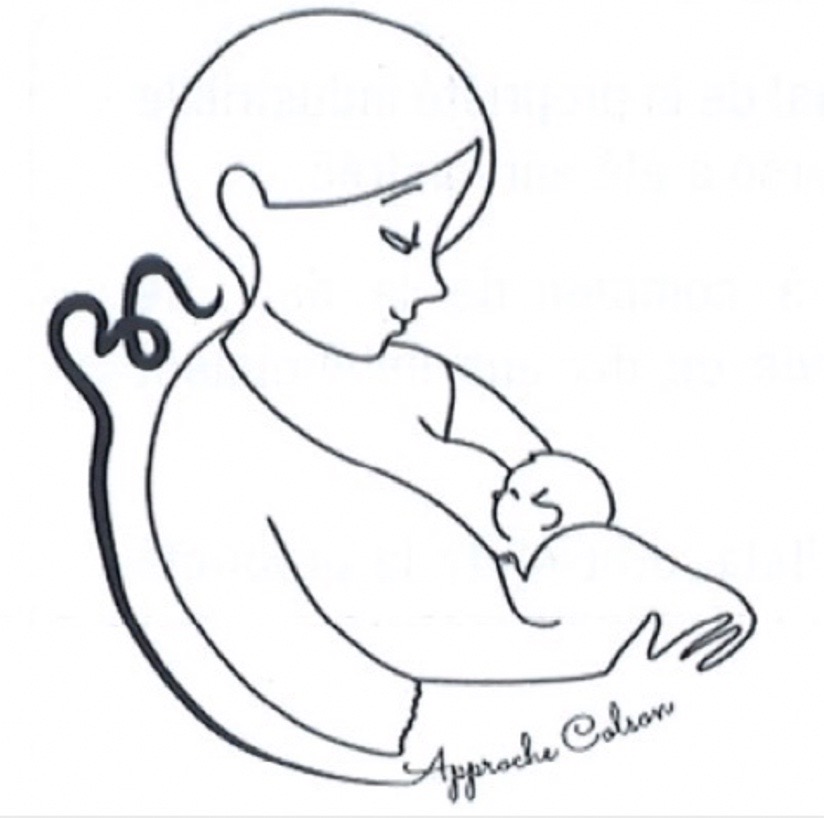1. How can you explain Biological Nurturing to future parents?
Biological Nurturing is also called laid-back breastfeeding : mothers neither sit upright nor do they lie on their sides or flat on their back. Instead, they are in comfortable semi-reclined positions where every part of their body is supported especially their shoulders and neck. Then they lie their sleeping babies on top of their bodies so that baby’s head is near or on the breast. In other words mothers keep their Sleeping babies at “the right address”. Baby was IN the womb, now he is tummy to tummy with mum in a physiological tilt.

2. What are the main advantages for the mother and the baby?
The research suggests that BN reduces sore nipples by 50% ! Yes, that’s right 

Mothers look after their own comfort, adjusting their position and their baby on the breast; they don’t need to hold baby or apply any pressure along baby’s back or neck. All tension vacates the maternal body making way for enjoyment and relaxation… a laid-back approach to breastfeeding 

Second and importantly, for most mothers, there is nothing to learn or to remember. You don’t have to remember which of your body parts is supposed to line up with the baby’s. You don’t have to make sure the baby’s tongue is forward etc. etc. In BN, most mothers don’t attach the baby to the breast so there is no step-by-step fixed system to learn. Most babies self attach and mothers usually help. You protect your baby or help baby achieve the activities of everyday living as baby’s own system is maturing. This is a great advantage for babies as the BN way may be a proprioceptive activity as they are learning to understand their body in relation to space and differentiate their hand from your breast for example. If they have trouble, (always sucking on their hand for example when they are at the breast), you help, otherwise, they do it themselves.
3. Why do we need a new approach to breastfeeding today?
Although many mothers want to breastfeed, few continue to breastfeed exclusively for the first weeks after birth. Many mothers experience sore nipples or feel they don’t have enough milk for their babies. In Britain 11% of mother wean during the first week, 6%, the first postnatal day. The most frequent problem is that they cannot get their baby to latch onto the breast. BN works on reflexes and innate behaviours. This means that the best time to initiate breastfeeding is when baby is asleep at the breast. Babies in the womb sucked and swallowed amniotic fluid every day from 12 weeks gestation. Babies in the womb were in a sleep state. This means that your baby is not born with a circadian rhythm and cannot differentiate day and night. Keeping your baby asleep on top of your breast in the first few days after the birth provides all the opportunities for baby to latch on and feed on small quantities of colostrum while you are both discovering how to breastfeed.
In BN positions, mothers do not need to hold the baby applying pressure along the baby’s back, head or neck. That means that they have one or both hands free. When mothers are laid-back, they instinctually release breastfeeding reflexes so they do not need to learn how to do this.

4. Do mothers need help to breastfeed ? What is the health professional role?
Mothers can do BN by themselves, they do not need assistance. However, all new mothers like to talk about their babies and socialise especially when the baby is feeding often. And of course, this is the time that health professionals can use to increase the mother’s confidence in her capacity to breastfeed. I call this purposeful conversation. For example, it is important for mothers to recognise the signs of adequate m ilk transfer and that their baby is getting enough milk. Health professionals have a very important role to play in health promotion and education.
5. How does BN relate to baby reflexes ?
All healthy babies have reflexes at birth so that if, during the first day of a baby’s life, during episodes of 2 or 3 hours of BN, you or the mother sees no reflex activity, and baby does not feed, then that would be a reason for an early discussion or perhaps referral to a doctor. The positional interactions between the laid-back maternal posture and the baby’s body facing, touching and closely applied to the mothers release the reflexes. Again these reflex movements occur even when the baby is sleeping on the mother in full BN positions. That is why the babies often self-attach when they are in sleep and drowsy behavioural states.
6. After you get started breastfeeding. How long can BN be used ?
You can use it for as long as you breastfeed. Remember it is not about lying down; Mothers usually prefer sitting back which means they can BN at home or while they are out and about, in cafés, on park benches and anywhere they need to feed their baby. BN can be used for as long as you want. Although many mothers breastfeed upright, the laid-back position is popular for those mothers who enjoy being comfortable. The laid back BN position is particularly useful in the early days and weeks when breastfeeding can take up a large part of your day. Comfort is key during this time and means you’ll enjoy holding your sleeping baby at the breast. This helps condition baby’s reflexes more quickly and helps with the transition into motherhood.

